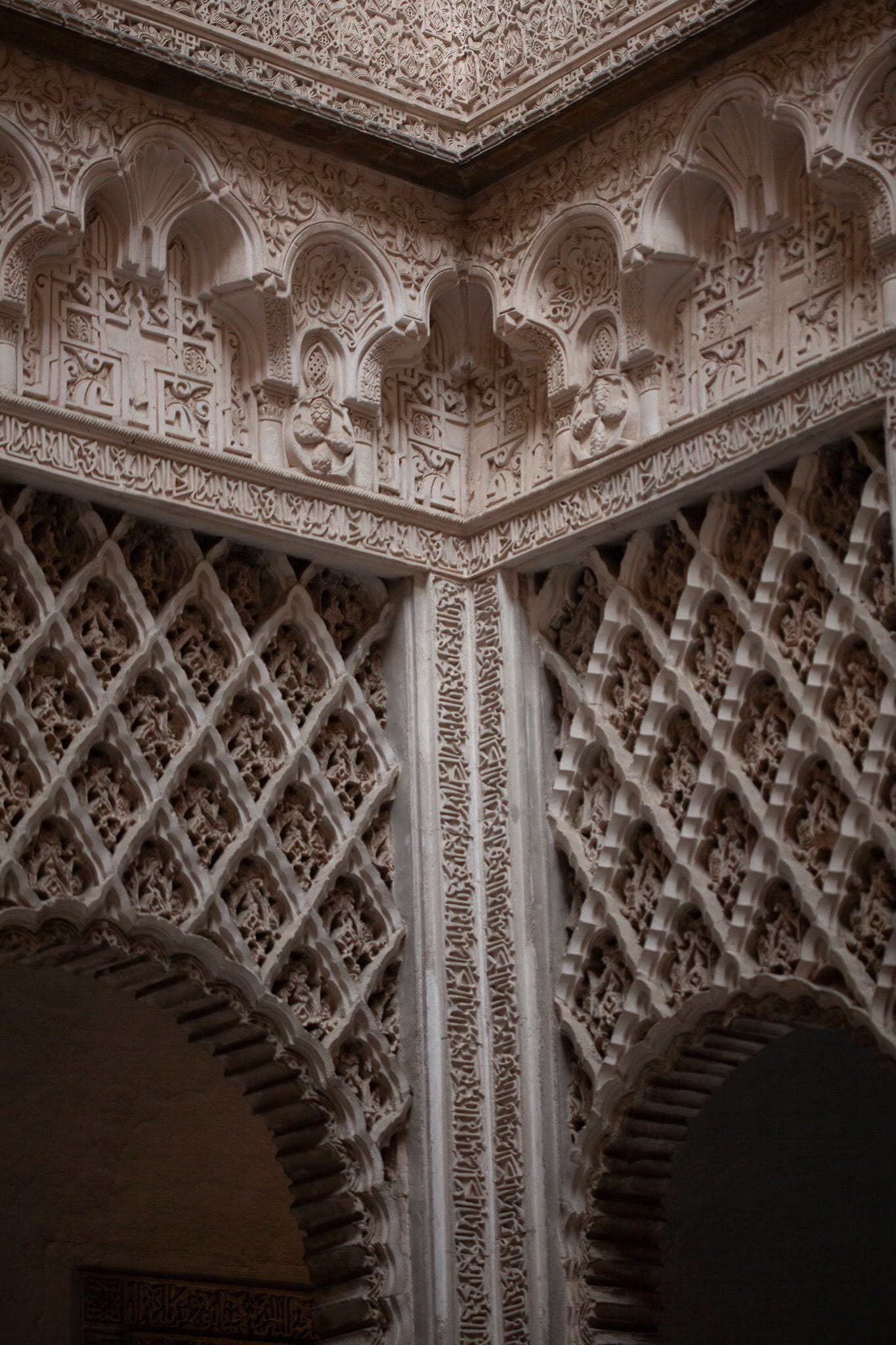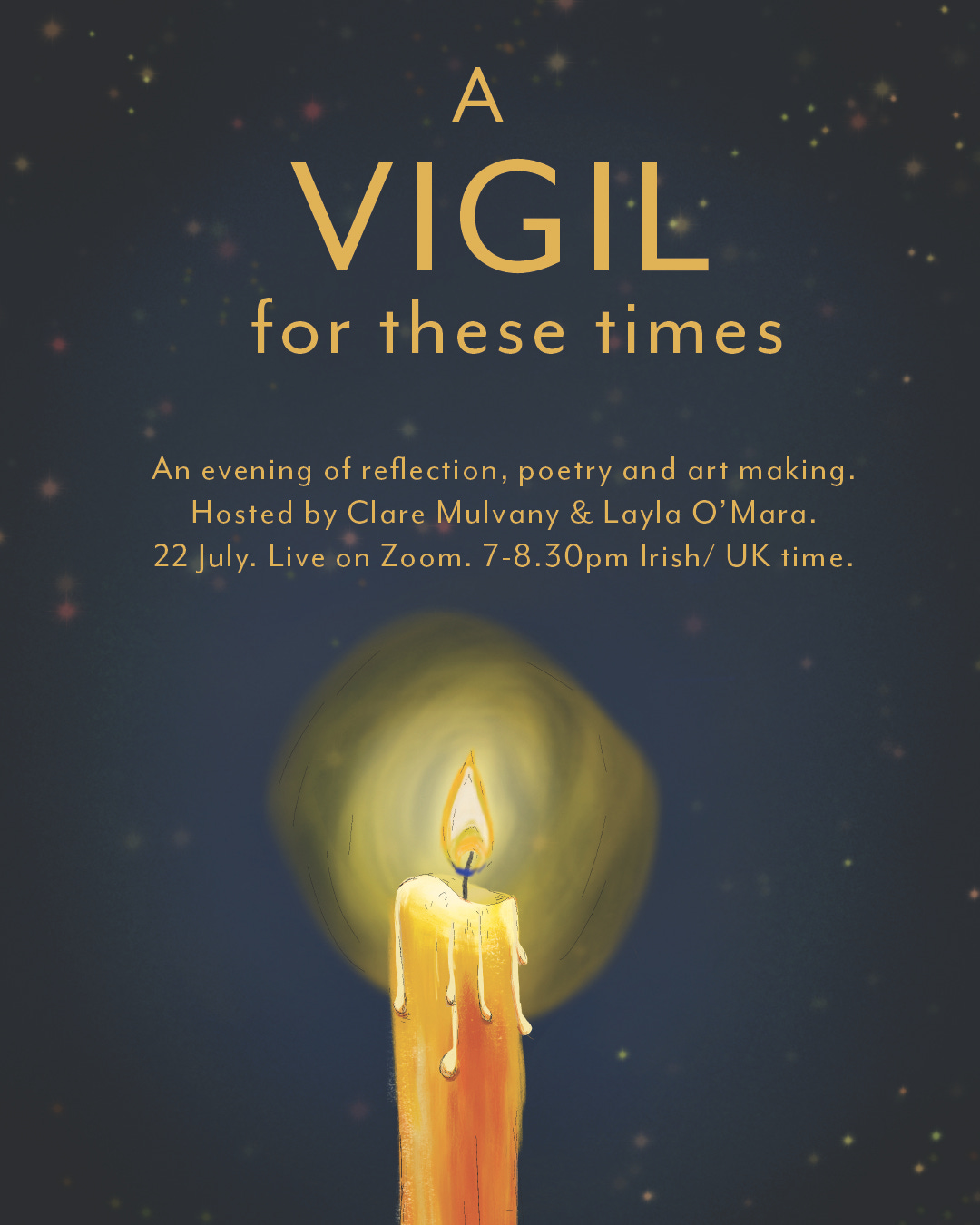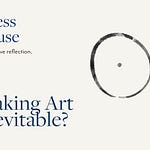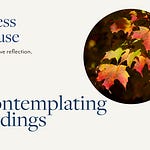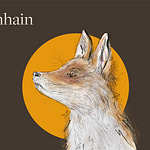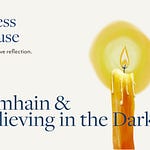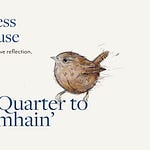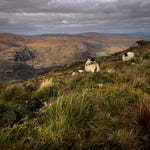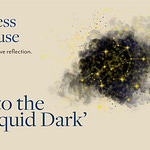Hello all
Taking inspiration from a recent trip to Seville, today’s post considers the role of art making, lineage and legacy via some masterworks. And I have some special invites below. The Wild Edge Summer Camp, ‘Focus and Flow’, is on its way (14-18th July) plus I will be hosting a contemplative gathering with fellow writer
, and guests (writer) and Brian Crosby (musician/composer), as a Vigil for These times. That is coming up on July 22nd. (Donation based tickets available)Thank you for being here,
Onwards, Inwards, Outwards.
Clare. x
(If this email is cut short in your browser, you may need to click through to read the full post)
The sky was cut with dark Vs, in darting, sweeping splices. The swifts over Seville’s bright domes speak of travels, long and fast. I learned a while back that swifts sleep on the wing and can turn half their brain off at a time, resting in flight. They can fly the distance to the moon and back in their lifetime. Under outcrops of shade from the sweltering summer heat, I spent a lot of time just marvelling; their high pitch shrieks shattering the silence; their forked forms piercing. These migrants of agility and speed, marking the city electric.
I’d come to Seville with plans, of course. There was the novel to read, and the one to continue. There was journaling, and my travel yoga mat where I was to be disciplined, routined. I don’t know why my brain had decided this was what it needed. It turns out, it needed the swift’s brain, to turn half off. It needed the warren of cobble streets, and sitting in galleries, just marvelling, and looking at the way plasterwork can hold sublimity in its form. It needed the companionship and laughter of an an old friend. It needed rest.
In the cool elegance of the Museo de Belle Artes, I sat for some time, yes, marvelling. This time it was under the influence of Murillo’s paintings, the Sevillian Baroque master, whose oil paint had a way of cutting the light into shades of transcendence. It wasn’t the religious subject matter that interested me particularly, but his understanding of how light plays out on form. Falling in silky ribbons over silky skin, getting trapped on the calloused sole of a devotee - the chaffed foot, just one of a million details, which sets his work apart. Under a frescoed dome, I slowly made my way through a chronology of his works, walking in tandem with the development of his craft. The collection in Seville is predominantly of Capuchin monks, their humility and love of nature reflected too in the evolving treatment of the light. The years softened his touch. It made the darkness more nuanced and the light more translucent. It was the kind of painting that only understands light because it also understands dark; absence and presence being so entwined.
Sitting there, I was reminded of my first visits to the Caravaggio, The Taking of Christ, which arrived to the National Gallery of Ireland when I was a teen. It was then I learned of the word, chiaroscuro, the treatment of light and contrast in painting, and in how Caravaggio, painting nearly half a century before Murillo and seen as a pioneer of the Baroque era, had pushed the edges of possibility with his paint. I still find it hard to believe that he completed it when he was only 30 and would die at just 38, with such a legacy.
Under the dome, I sat, camera at my side, examining the way Murillo painted some petals falling through thick shadow. Still, marvelling. My brain then, swift-like did a flash u-turn in time and space, and once again I was transported to another era, again to The National Gallery of Ireland, 2019, and again to a Spanish painter. But these now were memories of Sorolla’s paintings, the Valencian, whose way with a brush made light into soft swatches, soft landings, openings in the heart. I remember standing then too, mesmerised. I stood for several hours, frozen in front of the way dappled shade fell on sheets, which folded on a sleeping mother; how the light weft itself golden through the fingers of women weaving sails; how the light made magic out of sunhats, waves, skin, sea.
Sorolla was painting almost two centuries later, building on the legacies of the formative light painters, the ones that led to the Renaissance, and the Baroque and the early impressionists. With the rise of the merchant classes whose taste for art enabled a shift from purely religious subject matter to the domestic, Sorolla was free to paint scenes ‘en plein air’, the large Mediterranean horizon, his hometown of Valencia, and the freedom of a childhood barefoot in the sand. Layer and layer of paint, thick with lineage, and light.
All this to say, we never work in isolation. There are legacies behind us, to inform and inspire. There are legacies to build upon.
I love to think in this way of lineage. And as with painting, so with words.
As I was reading Orbital by Samantha Harvey, there in her words were the brushstroke echoes of Virgina Woolf; the lyrical loops, the chiroscuro patterning of the International Space Station in dark and light crisscrosses of the earth’s day and night; doing it all, not as mimic, but as pushing the limits of the form and the language within that form. While Murillo was working in fine detail and precision, Sorollo, was working in looser stokes. While Woolf was pushing at the lyrical, Harvey set herself limits and constraints - the pattern of the day, the geography of time and space, to nudge what the novel can do when dislocated from the need for cortisol inducing plot twists. I read the book, and marvelled, my brain unhooked from the chemical hits which so much storytelling has come to rely on. What can happen when we place ease and poetry into the mix, when we paint with light, when we let the bonding hormone of oxytocin, and the ease hormone of serotonin, lead the way. It’s empathy building. It’s connection building. In front of that novel, in front of the painting, art offers ways to rewire, recalibrate. It’s not just a pretty picture or a nice story. We are being re-wired for connection.
On my last evening in Seville, I sat down by the water, watching the swifts tangle themselves up in shadows as they darted under Triana bridge. Paddle-boarders cut silhouettes into the Guadalquivir river. The light hung as honey. In an almost automatic switch, I clicked. My camera, capturing a moment of light and dark, of shade and the absence of shade, of light and its legacy. But it’s not just a photo. It stands on the history of makers, inventors, of painters, of image makers. We can only do this because they did that. The past is in every frame. Every sentence. Even this one.

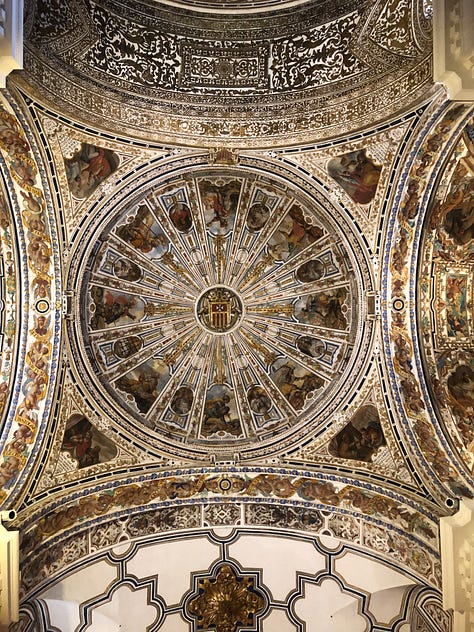
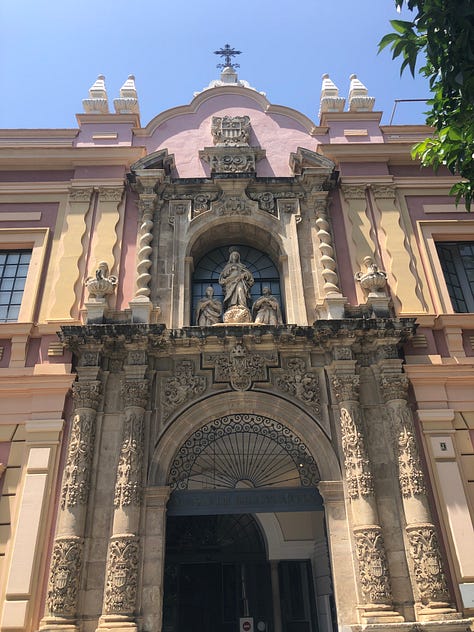
Returning home, swifts now below me, 36,000 feet ascended, I couldn’t help but think: what will our decedents be marvelling at? What brush strokes will take their breath away? What lineage will they hope to be aligned with? I hope they are thinking those things as the same age-old darts of swifts break the sky with their mould. I hope the sun sets bright for them. I hope they will sit under a Murillo, or Sorolla, or a Woolf or a Harvey, and they will be thinking they can only do this, because they did that. I hope they will be thinking of all that needs to be preserved to make art of our lives. I hope, with the firmest brushstoke that I can make, that we can still think this too.
Because They Did That…
What does this mean to you?
Whose legacy allows you to do that you do? Or aspire to do?
What lineage do you seek to continue…
And seriously, nature is bonkers! How are peacocks even possible?! (Here they were, just casually wandering the grounds of the Alcazar, Seville)

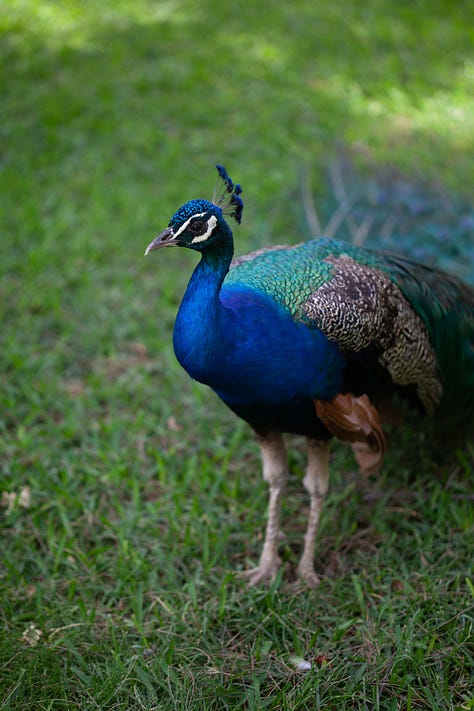
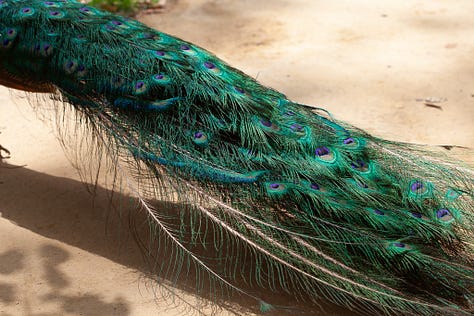
Coming up on The Wild Edge
For all paid members:
‘Focus & Flow’: The Wild Edge Summer Camp: July 14-18
A week to deepen and nourish your creativity and creative practice. With daily prompts and reflections, daily creative practice circles, campfire events. I’ve shared more about what to expect here
Camp timetable is live!
(Hours are in Irish/UK timezones. You can find your timezone here.
Plus, Coming Up: A Vigil for These Times
with and guests and Brian Crosby.
It is a difficult time to be alive. The tectonic plates of humanity are shifting and fault lines –horrific, painful fault lines – are showing themselves across the globe.
It can be challenging to know how to show up in these unprecedented times. We can feel afraid, overwhelmed, burnt out, or feel unable to step away from the horrors unfolding in real time on our screens. It can be hard to know how to use our voice, how to access our gifts, how to move towards the light.
But the world needs our voices. It needs our gifts. It needs us to come together and find ways to speak.
You are invited to join us for an evening of reflection, art making, music and readings. The evening will be combination of lit candles, gentle body work, breath, reflective prompts, inspiring art and openings to share our creative responses.
We are thinking particularly of the people of Palestine as we host this, a place on the planet right now where one of the greatest fault lines are showing up. And we are holding our mother Earth, and all her kin, as we grapple with the ecological and biodiversity crisis unfolding at our feet.
The event will be an opportunity for you to quietly reflect and to privately explore what your voice might sound like, and how you would like to use your gifts in these turbulent times.
All proceeds will go to MSF/ Doctors without Boarders Gaza Appeal.
Thank you.
Clare. x







